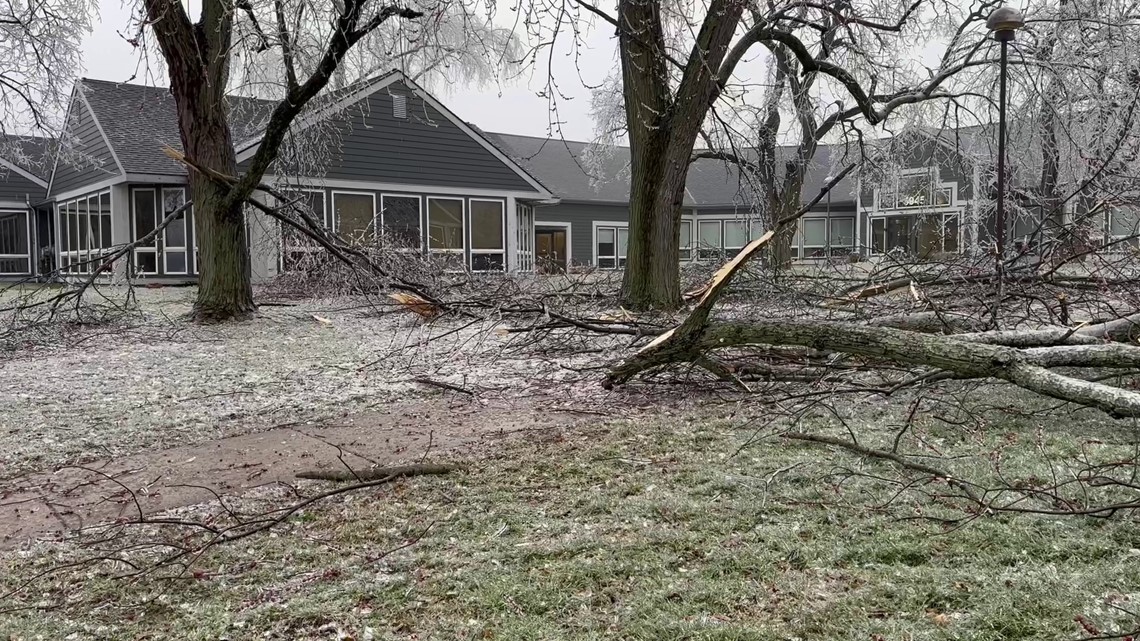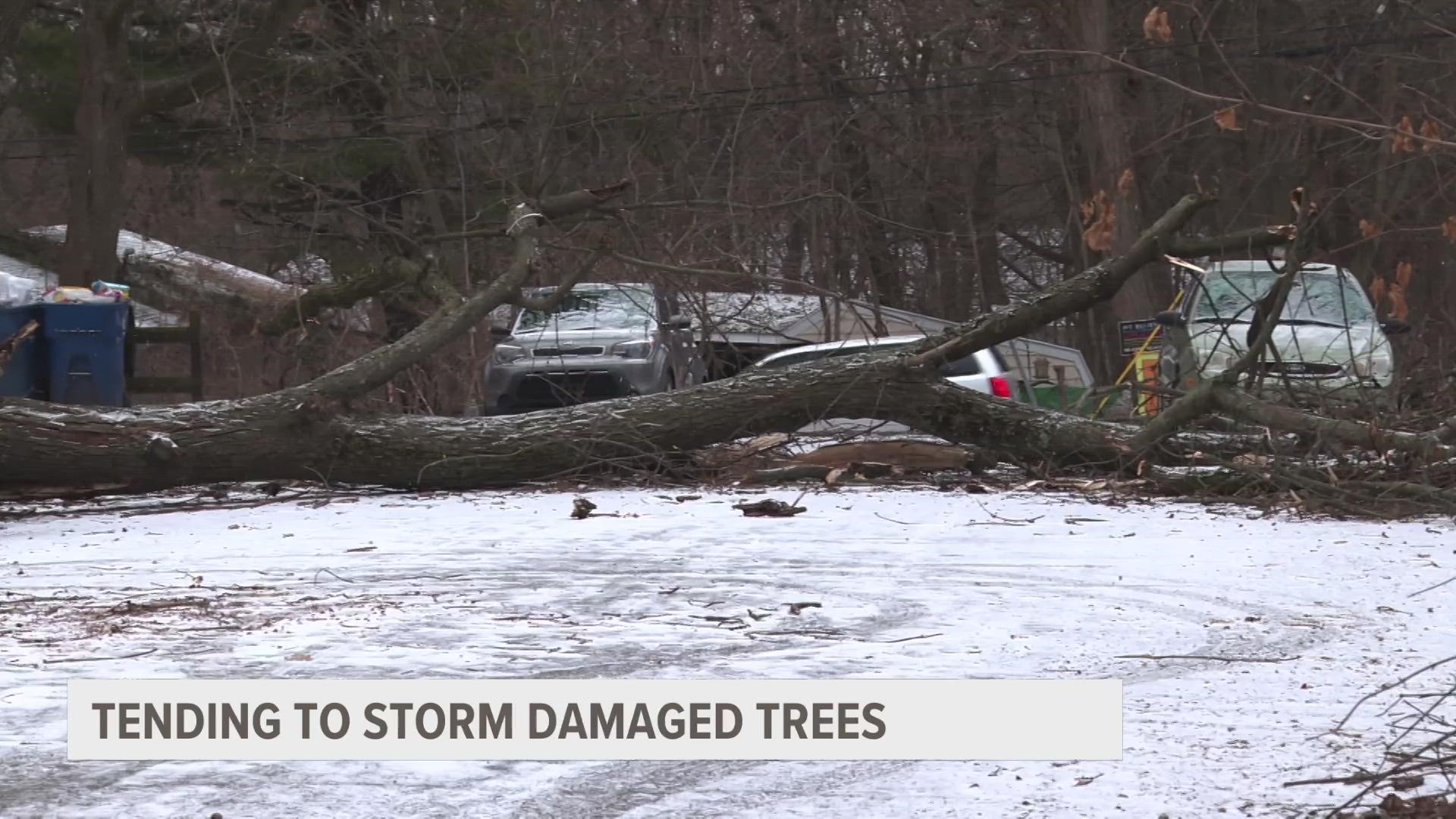GRAND RAPIDS, Mich. — The recent ice storms in West Michigan have led to numerous damaged trees and downed power lines, but as power restoration starts to wrap up, the tree clean up will likely continue on.
The first step in this process is to determine whether the tree can be or is even worth saving. Key considerations are how damaged the tree is, how old or healthy the tree is and what could be damaged around the tree later on if it falls into poor health.
The National Arbor Day Foundation has a guide here.
The next step is to address the damage, and whether or not you can undertake the repair efforts yourself. Bert Cregg, a professor or horticulture and forestry with MSU, says that limbs you can get to with a ladder or pruning pole are usually fine to do yourself, but those higher in the tree need attention as well.
"Make sure that you're taking the time, walk around that tree, especially if it's a large tree, and see what might be hanging up there in the branches, because what tends to happen with these ice storms, is we get a lot of what I call high breakage, [in] the limbs up near the top of the tree, because that's where the ice tends to accumulate the most," Cregg says.


While a professional tree service may be pricey, it's important that if you spot something that looks to be trouble high in the tree, you have it addressed. The last thing you want is a tree limb coming down on you, your house, or your car when the next storm comes through.
Cregg says that an un-repaired and damaged tree can have balance issues that could lead to it falling later in the year.
"A lot of it gets down to this, the balance issue and the weight distribution on the trees. If you have, you know, a lot of major limbs, especially if it's on one side of tree and not the other, then what you can see is in the spring, [when] we get the snow melt, we get some of these heavy rains in the spring, and then we have what we call a root failure. So that the tree falls, but really what happened is the root system failed," he said.
When commenting further about trees falling from the weight changes due to loss of limbs, Cregg added, "that's why we're concerned about the sort of 1/3 and 1/2 kind of situation, because now you could have a situation where now the tree is out of balance and then when we get those saturated soils. Yeah, it could, it could definitely [fall.]"
If you have a tree that is suspected to be in a damaged or dangerous state, make sure you contact a professional arborist or tree service for assistance and an action plan.
-- Meteorologist Michael Behrens
Follow me on social media! Facebook Meteorologist Michael Behrens, Twitter @MikeBehrensWX, and Instagram @MikeBehrensWX.
Email me at: MBehrens@13OnYourSide.com
Have a 30-second video or still photo to share? We'd love to share it with everyone! Email your image to Weather@13OnYourSide.com or post it to our 13OnYourSide Facebook Page.
►Make it easy to keep up to date with more stories like this. Download the 13 ON YOUR SIDE app now.
Have a news tip? Email news@13onyourside.com, visit our Facebook page or Twitter. Subscribe to our YouTube channel.

